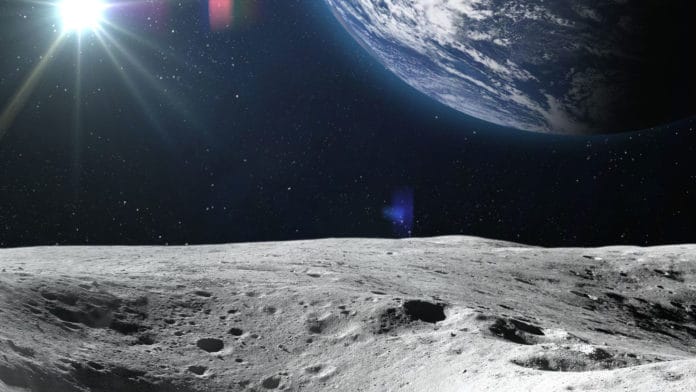It is of high technological importance and scientific interest to develop the lunar life support system for long-term exploration. Based on the analysis of the structure and composition of Chang’E-5 lunar soil sample, scientists in China report lunar soil has the potential to generate oxygen and fuel.
They found that the soil on the moon comprises active compounds that can convert carbon dioxide into oxygen and fuels. The sample contains compounds, including iron-rich and titanium-rich substances. These compounds could act as a catalyst to make desired products such as oxygen using sunlight and carbon dioxide.
Lunar soil and solar radiation are the two most abundant resources on the moon. Nanjing University material scientists Yingfang Yao and Zhigang Zou hope to design a system that utilizes these resources.
The team proposed an “extraterrestrial photosynthesis” technique based on their observation. The system uses soil to electrolyze water taken from the moon and astronauts breathing exhaust into oxygen and hydrogen using sunlight. During a hydrogenation process catalyzed by lunar soil, carbon dioxide exhaled by moon inhabitants is collected and mixed with hydrogen from water electrolysis.
The procedure produces hydrocarbons like methane, which can be utilized as fuel. According to scientists, the technique employs just sunlight to produce several useful goods, including water, oxygen, and fuel that may support life on a moonbase. The team hopes to test the system in space, most likely with China’s future crewed lunar expeditions.
Yao said, “We use in-situ environmental resources to minimize rocket payload, and our strategy provides a scenario for a sustainable and affordable extraterrestrial living environment.”
“While the catalytic efficiency of lunar soil is less than catalysts available on Earth, the team is testing different approaches to improve the design, such as melting the lunar soil into a nanostructured high-entropy material, which is a better catalyst.”
Previously, scientists have proposed many strategies for extraterrestrial survival. But most designs require energy sources from Earth. For example, NASA’s Perseverance Mars rover brought an instrument that can use carbon dioxide in the planet’s atmosphere to make oxygen, but it’s powered by a nuclear battery onboard.
Yao said, “In the near future, we will see the crewed spaceflight industry developing rapidly. Just like the ‘Age of Sail’ in the 1600s, when hundreds of ships head to the sea, we will enter an ‘Age of Space.’ But if we want to carry out large-scale exploration of the extraterrestrial world, we will need to think of ways to reduce payload, meaning relying on as little supplies from Earth as possible and using extraterrestrial resources instead.”
Journal Reference:
- Yingfang Yao, Lu Wang, et al. Extraterrestrial photosynthesis by Chang’E-5 lunar soil. DOI: 10.1016/j.joule.2022.04.011
